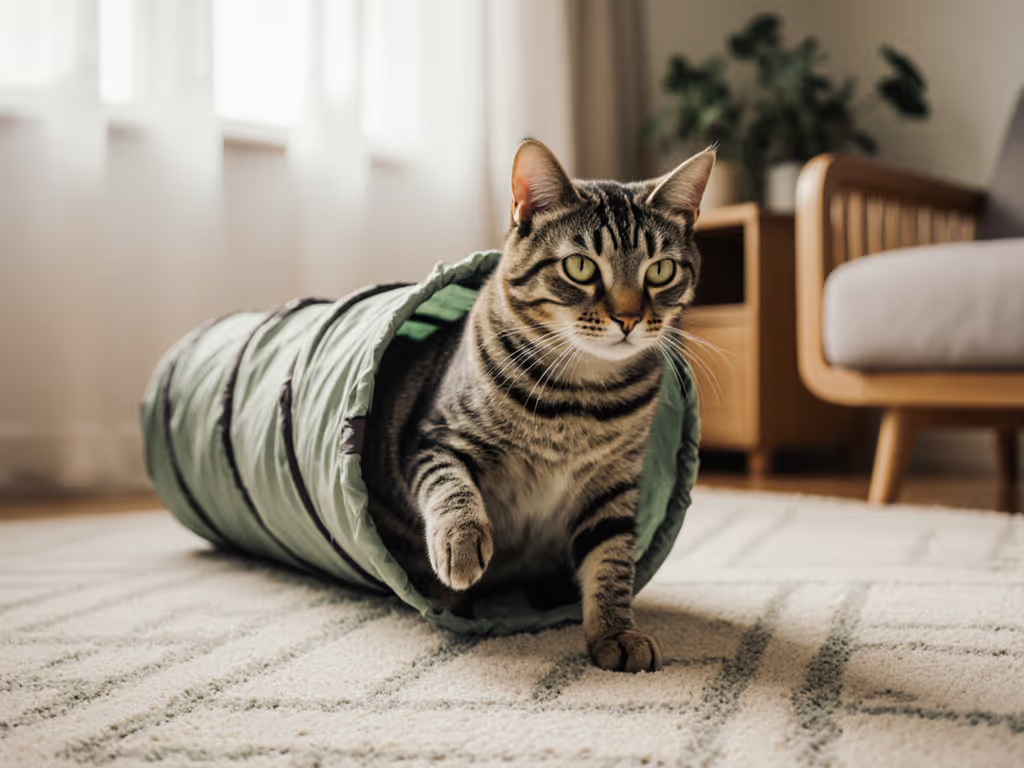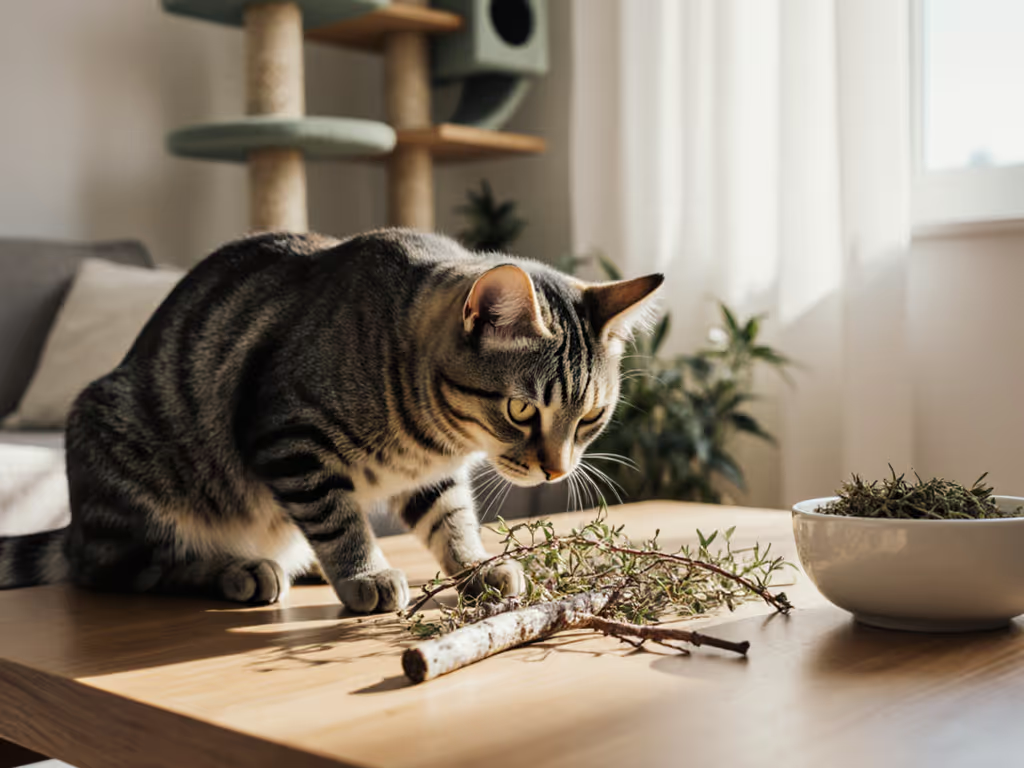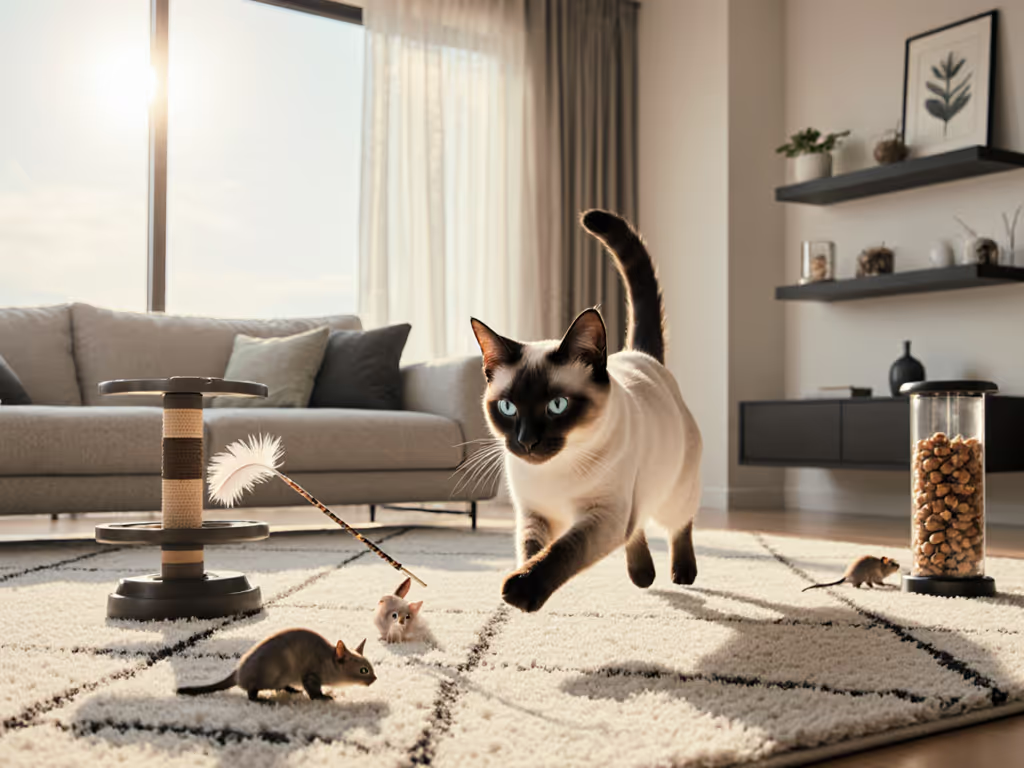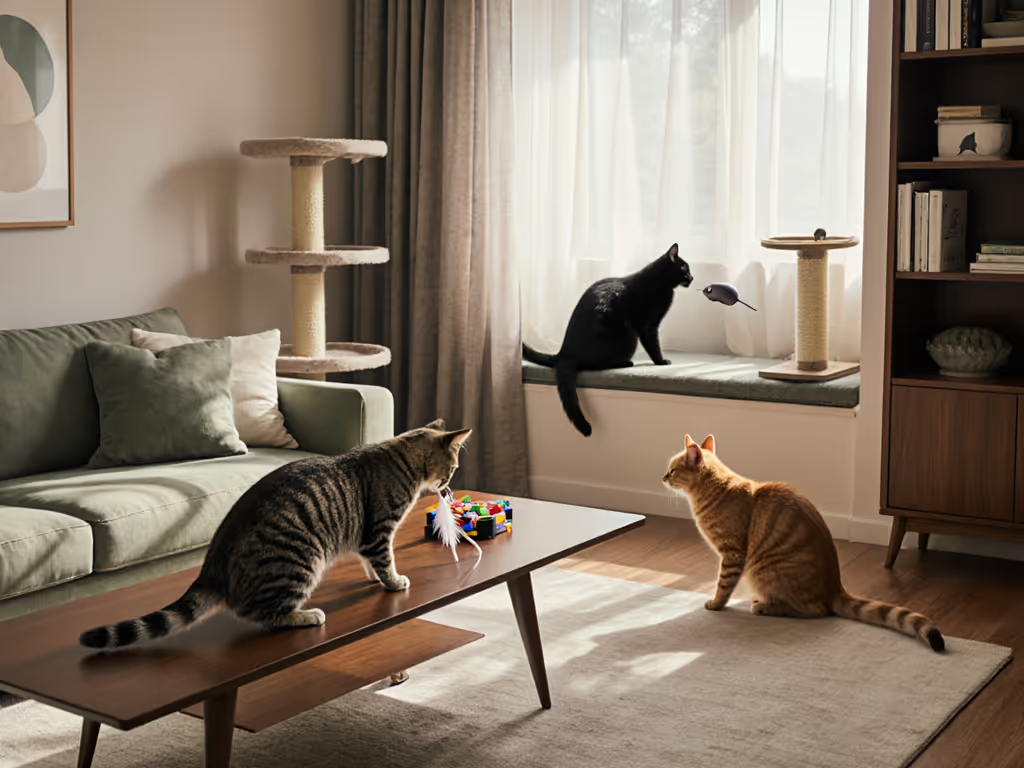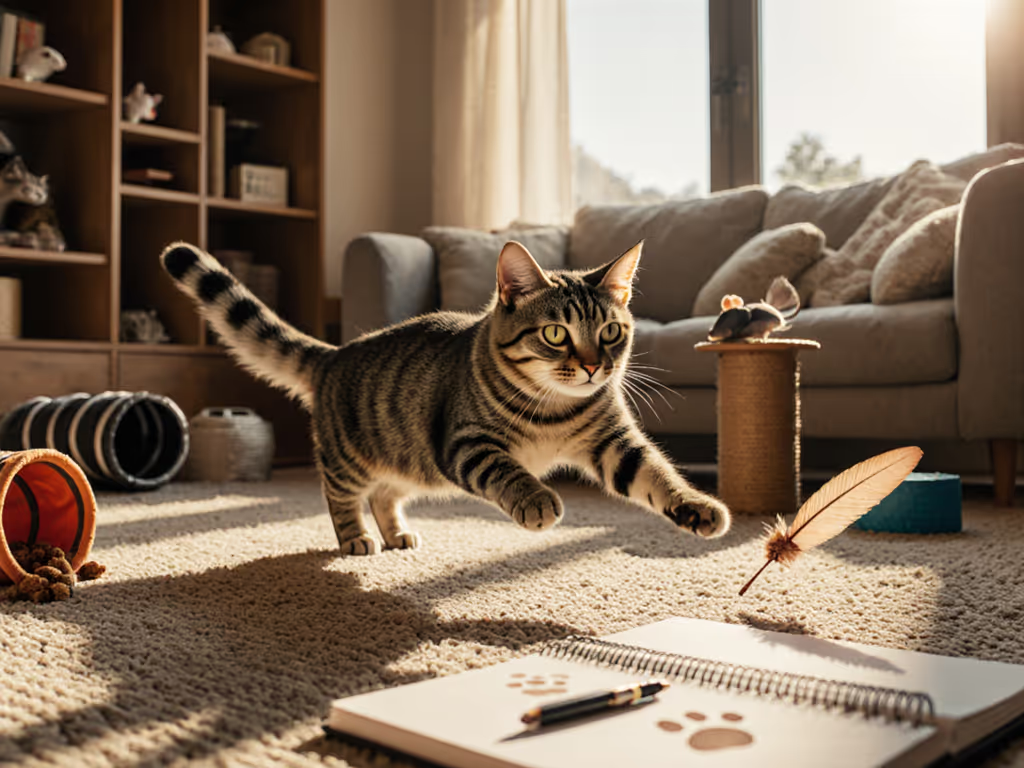
Organic vs Standard Catnip Toys: Engage Cats Without Clutter
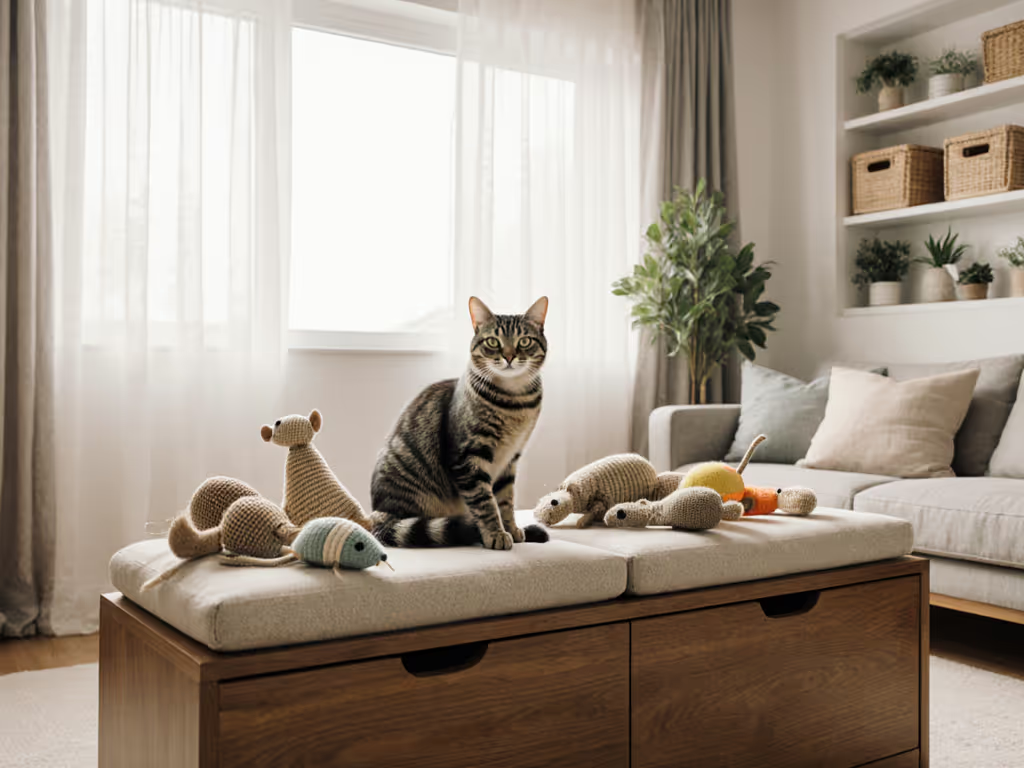
When selecting catnip toys for your feline companion, the choice between organic and standard options affects more than just your cat's play sessions, and it influences your home's harmony and your peace of mind. As someone who has spent years curating cats' catnip toys that actually earn their keep in small spaces, I've discovered that the right selection creates calm rooms where curiosity thrives rather than chaos that shuts it down. Let's examine how organic catnip toys might better serve both your cat's instincts and your minimalist aesthetic.
Why Potency Matters More Than You Think
The Nepetalactone Difference
Catnip's magic lies in nepetalactone, the essential oil triggering that blissful rolling, rubbing, and playful frenzy in susceptible cats. Research confirms that organically grown catnip often contains 15-30% higher concentrations of this compound compared to conventionally grown varieties. This isn't just marketing fluff. The difference in potency is something you'll notice immediately when your cat encounters a genuinely potent toy. For a deeper dive into how catnip and silver vine affect cats and which toys maximize their effects, see our Catnip Toys Explained guide.
Organic farming practices avoid synthetic pesticides and herbicides that can dilute nepetalactone concentration and leave residues on the plant. When soil remains free from chemical interference, catnip develops more robust essential oil glands as part of its natural defense system. This translates to toys that require less frequent replacement because cats experience more satisfying play sessions with fewer reinforcements.
Measuring Impact Through Feline Behavior
A quiet living space demands toys that deliver maximum engagement without creating maximum chaos. Standard catnip toys often require excessive batting, tossing, and rolling to maintain a cat's interest because of their weaker potency. This leads to more scattered toys, louder play sessions, and ultimately, more clutter.
With higher nepetalactone content, organic catnip toys typically deliver:
- Focused play sessions (5-7 minutes of intense engagement rather than 15 minutes of scattered activity)
- Complete satisfaction cycles where cats naturally disengage after their instinctual "hunt" concludes
- Fewer abandoned toys scattered around your living space because the toy fulfilled its purpose
Safety Considerations Beyond the Label
Chemical Residues in Conventional Catnip
The USDA's Pesticide Data Program confirms that conventionally grown herbs often contain multiple pesticide residues. While safe for human consumption within limits, these cumulative exposures concern many cat guardians, especially when cats groom themselves after rolling in catnip or chew directly on toys.
Cats lack certain liver enzymes that help humans metabolize chemicals, making them more vulnerable to potential buildup of toxins over time. Choosing organic catnip toys eliminates this concern entirely, which is particularly important for households with multiple cats sharing toys or kittens still developing their systems.
Material Quality You Can Measure
Beyond the catnip itself, quality construction impacts both safety and space efficiency. Many conventional catnip toys use cheaper fabrics that fray quickly, creating both a safety hazard and visual clutter as stuffing escapes. Look for toys with:
- Reinforced seams (minimum 8-10 stitches per inch)
- Tight-weave organic cotton (prevents excessive shedding of fibers)
- Non-toxic dyes (prevents color transfer to your light-colored furniture)
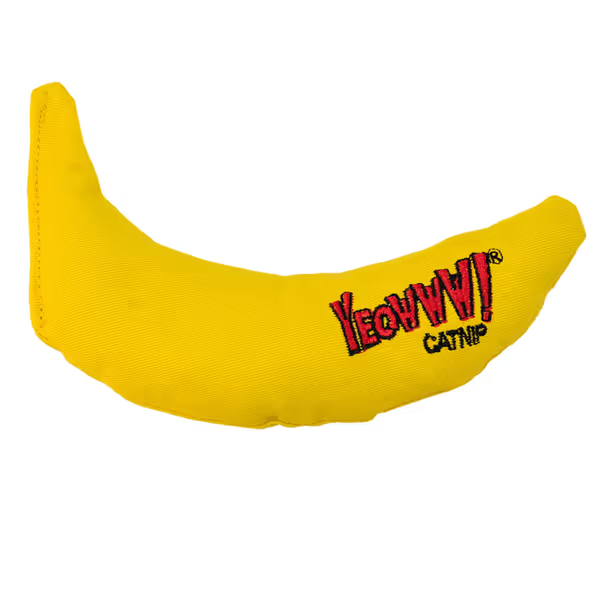
Yeowww! Yellow Banana Catnip Toy
This Yeowww! Banana Catnip Toy exemplifies the space-smart approach with its 7"×3" footprint that fits neatly in minimalist spaces without sacrificing engagement. The tight cotton weave maintains integrity through hundreds of batting sessions, while the organic catnip's potency ensures cats feel satisfied after reasonable play sessions, reducing the likelihood of toys being scattered throughout your home.
Minimalist Integration Strategies
Footprint Awareness: Your Secret Weapon Against Clutter
The average cat toy occupies 12-15 inches of linear space when abandoned, which translates to significant visual clutter in small homes. When selecting cats' catnip toys, measure twice and buy once:
- Maximum toy footprint: Aim for items no larger than 8"×4" for single-cat households
- Storage coefficient: Choose toys that stack or nest (target 3:1 storage ratio)
- Visual weight: Neutral tones with clean lines disappear into curated spaces
The One-In, One-Out Rule
Every time you introduce a new catnip toy, remove an existing one. This discipline prevents the "toy graveyard" phenomenon where cats ignore most options because novelty has been diluted across too many choices. Cats thrive on novelty cycles (typically 7-10 days between reintroductions), so maintaining a small, rotating collection keeps engagement high without visual chaos.
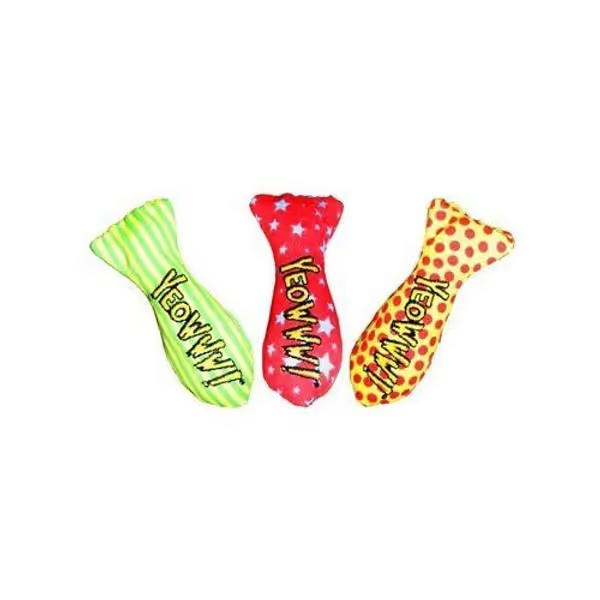
Yeowww! 100% Organic Catnip Stinkies Sardines (3-Pack)
These compact Yeowww! Stinkies Sardines measure just 3.6"×0.7" each, making them ideal for minimalist rotation systems. Their small size allows storage in a lidded ceramic dish (measuring 4" diameter) that complements your decor while containing both scent and visual clutter. When stored properly, the organic catnip maintains potency for 3-4 months, perfect for cycling through your curated selection.
Environmental Harmony: When Your Values Meet Your Space
Supporting Sustainable Practices Without Compromising Aesthetics
"Organic" means more than just pesticide-free farming. It speaks to water conservation, soil health, and biodiversity preservation. Conventional catnip farming can use up to 30% more water than regenerative organic practices, according to recent agricultural studies. When your values align with your purchases, your home environment reflects that harmony.
But here's what matters for your space: sustainably grown catnip often has tighter, more uniform leaves that create less mess when toys inevitably develop small holes through play. This translates to less green dust scattered across your light-colored floors (a subtle but meaningful difference in maintaining visual calm).
Noise Considerations: The Underrated Factor
Listen closely during play sessions: cheaper catnip toys often contain fillers like cotton balls or foam bits that create distracting rustling noises when batted around. This sensory overload can trigger overstimulation in noise-sensitive cats while disrupting your own peace.
Organic catnip toys typically contain only processed catnip leaves without unnecessary fillers. The resulting play is quieter, more focused on the cat's movements than the toy's internal noise, which creates a calmer atmosphere conducive to sustained engagement without overwhelming the space.
Smart Rotation Systems for Small Spaces
The Lidded Basket Method
After my own experience with echo-prone spaces, I developed this simple system that keeps toys both accessible to cats and visually contained:
- Select a shallow basket (maximum 10"×8" footprint)
- Line with neutral-toned fabric that complements your decor
- Place only 2-3 toys inside (never more than your cat's active attention span)
- Refresh the selection every 7-10 days
This approach maintains novelty while preventing toy proliferation. Cats can see and access their current selection without creating visual chaos, and the contained scent helps preserve potency between play sessions.
Creating Calm Zones
Designate one small area (maximum 2'×2') as your "play zone", somewhere your cat naturally plays anyway. This focused approach prevents toys from migrating throughout your space. When the play zone contains only items that genuinely engage your cat, you'll find they return to it consistently rather than scattering toys everywhere hunting for stimulation.
Calm rooms invite play; chaos shuts curiosity down.
Finding Your Balance: Practical Considerations
Cost Analysis: Beyond the Initial Price
While organic catnip toys often carry a 15-25% higher price tag, their superior potency means they typically last 2-3 times longer than conventional alternatives before losing appeal. This translates to actual cost savings when you stop replacing ignored toys every few weeks.
Consider this calculation for a typical urban dweller with 500 square feet of living space:
- 3 conventional toys @ $4 each = $12 (replaced monthly)
- 2 organic toys @ $7 each = $14 (replaced quarterly)
Your annual savings: $100, plus 36 hours spent shopping for replacements you didn't need, all while maintaining a more peaceful living environment.
When Standard Catnip Might Suffice
Not every play moment requires organic potency. For certain applications, standard catnip serves adequately:
- Training mats (where scent persistence matters less)
- Outdoor play areas (where environmental dilution reduces chemical concerns)
- Temporary distraction tools (like vet visit carriers)
But for your primary organic vs standard catnip toys that live in your main living space (where aesthetics, potency, and longevity intersect), organic makes the most sense for maintaining both feline engagement and household harmony.
Final Thoughts: Creating Harmony Through Intentional Choices
The right catnip toys shouldn't feel like compromises between your cat's needs and your home's aesthetic. When you select thoughtfully designed options with genuine organic content, you create spaces where both you and your cat can thrive: clear floors, clear focus.
Remember that your cat's play environment reflects your shared values. Every toy you keep earns its place through consistent engagement, not through hope that "maybe this time" your cat will use it. By choosing quality over quantity and potency over price, you build a minimalist enrichment system that serves everyone in your home.
For those interested in taking a deeper dive into creating space-smart enrichment environments, I've compiled a detailed guide to measuring your space's "play potential" and matching it to your cat's specific prey drive profile. Understanding these subtle connections helps transform random purchases into purposeful additions that maintain both your cat's wellbeing and your home's tranquility.

